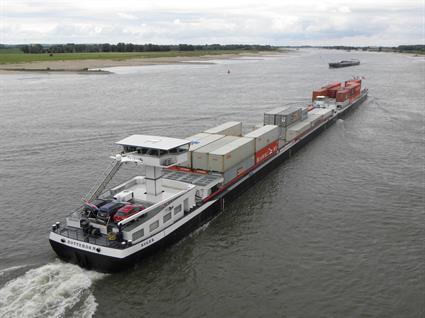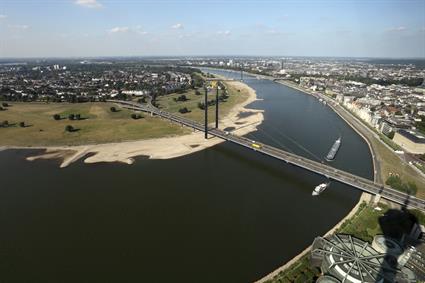

The newest EU directive regarding emission standards puts a heavy strain on the inland shipping industry. One of the most promising solutions to comply is the use of LNG. Wärtsilä’s dual-fuel technology blazes the trail.
With its dense network of waterways and lakes, its many inland ports and seaports and hinterland connections, and its up-to-date infrastructure, the Netherlands is a dream country for inland shipping. No wonder Wärtsilä’s inland shipping expertise hub in Western Europe has its headquarters in the Dutch town of Schiedam, near Rotterdam.
Inland shipping is the cleanest transport option currently available, showing far better emission figures than any other transportation mode. As far as CO2 is concerned, shipping is over 30 percent cleaner per tonne kilometre than trucks. Yet the fleet will have to become a lot greener soon, in order to meet the new EU directive NRMM (Non-Road Mobile Machinery) Stage V, which requires new shipping engines to comply with very strict limits on the emission of NOx, fine particles and Total Hydro Carbons. The new directive will be effective starting 1st January, 2020.
But what does this directive mean for the shipping industry?
“Road transport has had a long and gradual trajectory to become greener. Inland shipping now has to catch up in one giant leap, which will require radical technical changes. Fleet owners are facing high investments in the years to come,” says Khalid Tachi, Director, Expertise and Innovation Centre inland Barging (EICB).
While the EICB is currently studying the implications of the directive, Tachi says the bright side, of course, is that Stage V will eventually make inland shipping even more competitive in terms of green performance when compared with other transportation options. Once it comes into effect, inland shipping is expected to show an 80 percent reduction in CO2 emission.

Betting on dual-fuel
Builders of shipping engines are gearing up to make their products Stage V-compliant. Wärtsilä is taking the lead with the use of liquefied natural gas (LNG), which delivers proven reductions in terms of NOx (80%) and fine particulate emissions (80 - 90%).
Wärtsilä has gained valuable experience with LNG having built dual-fuel (DF) engines for ocean-going vessels for over 15 years now. Currently, there are six inland barges sailing on LNG, two of which are equipped with Wärtsilä dual-fuel propulsion. Both ships show excellent performance figures. For another sixteen vessels, orders are secured for the complete LNG propulsion system (DF engine, LNGPac, clutch propeller & nozzles).
Reaping the benefits
While the long term success of LNG DF engines seems to be assured, there are some things that need to be taken into consideration going forward.
“Fleet owners tend to purchase older engine technology – which doesn’t need to comply yet – just prior to the date when the new rules become effective. However, this effect will eventually wear out, and Wärtsilä will be in an excellent position to reap the harvest of its innovative approach by then," says Bram Kruyt, Director, Inland Waterways, Wärtsilä Services. Another boost will come from end users, who increasingly demand green transport solutions for their products.
Kruyt is confident the combination of LNG and Wärtsilä’s DF engines will emerge strong. “Inland shipping will always be around. There is no feasible alternative; the roads are getting more and more congested. And as long as there are barges on the rivers, Wärtsilä will be there to provide clean engine technology.”



